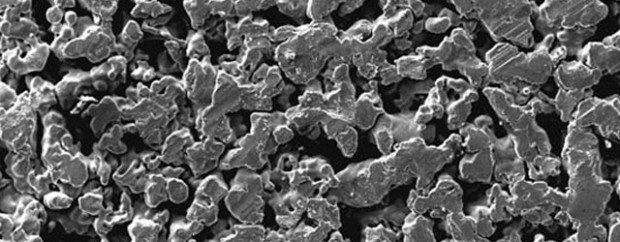
Sintering is a heat treatment for parts with different applications and can be done in vacuum furnaces, this ensures an excellent finish of the parts with respect to the treatment in controlled atmosphere.
The parts are heated up to the temperature of vaporization of the binder. The temperature is maintained at this level until the outgassing of the binder is complete. The control of the debinding process is provided through the application of a partial pressure of a gas ( which must be suitable for the purpose ) which is higher than the vapor pressure of the main element of the alloy ( the partial pressure is normally between 1 and 10 Torr) . The temperature is then increased to the sintering temperature of the main element of the alloy and maintained so that occurs a solid state diffusion of the part. The parts are then baked and cooled .
Depending on the future application of the metals composing the alloy can control the cooling rate in order to meet the requirements of hardness and density required for the material.
Several areas are based on sintered components , including all the ones that stand out the most are the doctor (some artificial implants – see the article on installation of artificial limbs ) , automotive ( power transmissions , the particulate filter , valve seats … ) tools (drills, cutting tools and grinding) .
During the debinding process , all of the bins must be completely removed from components because, if contaminants could soil the oven and affect the performance of the same and the quality of the sintering process .



